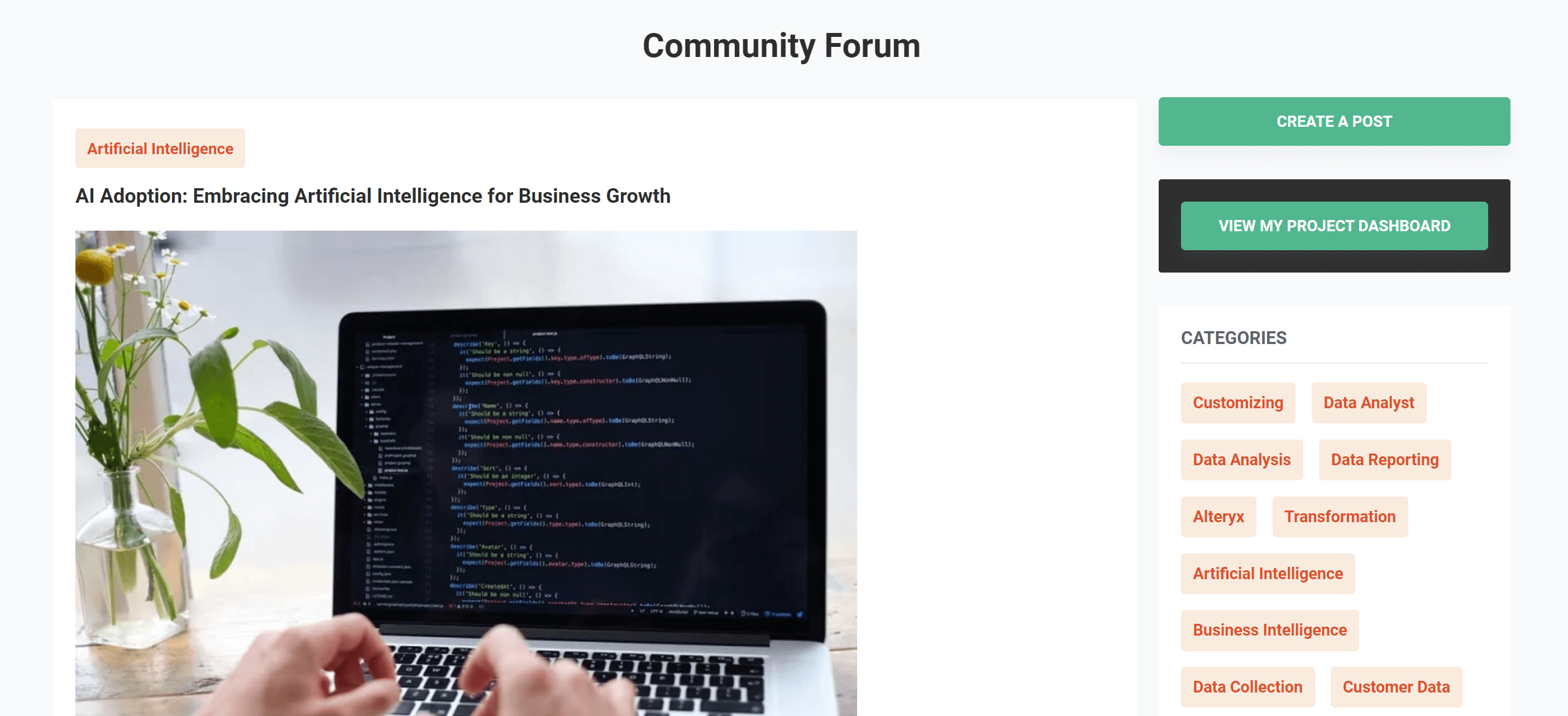What Does a Data Analyst Do?

Table of content
Introduction
What Is a Data Analyst
Data Analyst Roles and Responsibilities
Tools used by data analyst
Skills required for data analyst
Types of Data Analysts
Conclusion
Introduction
Data analysts are crucial to modern companies, as they analyze the company’s operations and customer base, evaluate how these factors impact profits, and provide leadership with recommendations for future growth.
According to McKenzie, successful data analysts possess strong mathematical and statistical skills, along with the following abilities:
- Analytical skills to collect, examine, and interpret data
- Numerical skills to measure and analyze data statistically
- Technical skills, including proficiency in software and scripting languages, to organize and present data
As a data analyst, you gather data using software, surveys, and other tools, perform statistical analyses, and interpret the results to support critical business decisions. For example, a data analyst might analyze the demographics of visitors who clicked on a specific advertising campaign on a company’s website. This data can help determine if the campaign is reaching its target audience, assess its effectiveness, and decide whether to invest in similar advertising efforts in the future, McKenzie explained.
What Is a Data Analyst
The rapid digitalization of our society and the increasing adoption of various electronic devices have led to an exponential growth of data. This trend shows no signs of slowing down; in fact, it is expected to accelerate with the deployment of the Internet of Things (IoT) and 5G infrastructure, further increasing the rate of data generation.
In this context, companies are in great need of data professionals who can build robust and reliable data infrastructures and analyze large volumes of data to support business decision-making. Among these professionals, the Data Analyst role stands out as particularly popular and well-compensated.
According to Forbes, the job market for Data Analysts is booming, with a promising outlook for these in-demand professionals. So, what does a Data Analyst do? Here, we delve into the role and explore why Data Analysts are quickly becoming essential in every data department. In separate articles, we’ve detailed how to become a Data Analyst and how to prepare for Data Analyst interview questions.
The main goal of any data analysis project is to provide valuable insights for making informed business decisions. Typically, the role of a Data Analyst involves five key steps:
- Identify the data to be analyzed
- Acquire the necessary data
- Prepare the data by cleaning it
- Analyze the data
- Derive insights from the analysis
The method of data analysis can vary depending on the specific question being addressed. For more detailed information on types of data analysis, you can read further. Descriptive analytics explains what happened, diagnostic analytics clarifies why it happened, predictive analytics forecasts future trends, and prescriptive analytics suggests the next steps.
Data Analyst Roles and Responsibilities
Data Collection and Analysis
Central to a data analyst’s responsibilities is the collection and examination of data. This involves gathering relevant information from various sources, structuring it for effective analysis, and scrutinising it to derive meaningful insights.
Depending on the nature of the data and the objectives of the analysis, this process may require a range of techniques, from simple queries to complex statistical methods.
Database Management and Maintenance
Another essential duty of a data analyst is maintaining and managing databases. Data analysts create and manage databases to store and organize data efficiently. They ensure data integrity, troubleshoot issues, and implement necessary updates or modifications to optimize database performance.
Generating Reports and Presenting Findings
Turning data into actionable insights is a critical role for data analysts. After analyzing data, they generate comprehensive reports that highlight key findings and trends. However, compiling and presenting these insights in a way that is understandable and valuable to management and other stakeholders is an art in itself. A successful data analyst not only produces quality analysis but also communicates its implications effectively to aid decision-making.
Specialized Roles and Tasks
Certain data analyst positions may involve specialised tasks. As businesses evolve and data analysis becomes more integrated into decision-making processes, data analysts are increasingly required to wear multiple hats and delve into specialized areas.
Data Visualization and Dashboard Creation
Data-driven decisions are vital to a business’s success, and the ability to visualize data and create dashboards is becoming an essential skill for data analysts. These tasks go beyond presenting data in charts or tables. They involve creating a visual narrative that conveys complex insights in a simplified, easily digestible manner. This can be achieved through various tools and software that allow an analyst to build interactive dashboards, maps, and other graphical representations, enabling the data to ‘tell the story’ itself.
Statistical Analysis and Interpretation
While not all data analysts are expected to have statistical expertise, those who do add another layer of depth to their role. Statistical analysis involves applying statistical techniques to interpret data and draw conclusions. This may mean using advanced regression models, hypothesis testing, or even machine learning algorithms to identify patterns or make predictions. An analyst with these capabilities can provide a more nuanced understanding of data and its potential implications.
Predictive Modeling and Data Mining
An emerging frontier in the data analysis landscape is predictive modeling and data mining. This involves using data to predict future trends or behaviors, usually through probabilistic models. Data mining, on the other hand, involves exploring large datasets to identify patterns or relationships that may otherwise go unnoticed. With the rise of low-code predictive modeling tools like Pecan, this specialized task is becoming more accessible and increasingly expected of data analysts.
These specialized roles and tasks represent the cutting edge of the data analyst profession. However, specific skills and qualifications are essential to perform these tasks successfully.
Tools used by data analyst :
Data analysis tools encompass a range of software platforms that process, analyze, and visualize large datasets to derive meaningful insights and support decision-making across various fields such as business, finance, healthcare, and research. These tools enable users to manipulate data, perform statistical analyses, create predictive models, and present findings through charts, graphs, and dashboards.
Here are some key data analysis tools:
- Tableau
- Primary Use: Data visualization and business intelligence.
- Features: Easy integration with databases, spreadsheets, and big data queries. Drag-and-drop functionality for creating interactive dashboards.
- Real-world Applications: Business intelligence, sales and marketing performance tracking, supply chain and operations management.
- Apache Spark
- Primary Use: Distributed computing framework for large-scale data processing.
- Features: High-speed processing capabilities, supports real-time streaming, interactive querying, and machine learning.
- Real-world Applications: Real-time data processing and analytics, machine learning model development, large-scale data processing in financial services.
- Power BI
- Primary Use: Business analytics tool by Microsoft for dynamic visualizations.
- Features: Integration with Microsoft products and various data sources, real-time dashboard updates.
- Real-world Applications: Sales and marketing insights, financial performance analytics, HR and operations workforce analytics.
- Python
- Primary Use: General-purpose programming language with strong data analysis capabilities.
- Features: Extensive support for libraries like Pandas and NumPy for data manipulation and machine learning.
- Real-world Applications: Predictive analytics in finance and retail, AI and machine learning model development, web scraping and data extraction.
- RapidMiner
- Primary Use: Data science platform for data preparation, machine learning, and predictive analytics.
- Features: Visual workflow designer, extensive data mining functionalities.
- Real-world Applications: Predictive maintenance in manufacturing, customer churn prediction in telecommunications, fraud detection in banking and finance.
- KNIME
- Primary Use: Open-source data analytics and integration platform.
- Features: Node-based interface for visual assembly of workflows, supports integration with various data sources.
- Real-world Applications: Pharmaceutical research data analysis, customer data analysis for marketing insights, financial data analysis for risk modeling.
These tools empower organizations and professionals to uncover patterns, trends, and insights from complex datasets, facilitating informed decision-making and strategic planning across industries.
Skills required for data analyst
- SQL, or Structured Query Language, is an essential industry-standard for data analysts, integral for managing and manipulating datasets beyond Excel’s capabilities. Organizations universally require data analyst skills to handle and optimize data storage, integrate databases for operations like product recommendations, and engineer database structures. Job markets frequently demand proficiency in SQL, with median salaries for those adept in these data analyst skills exceeding $87,000. Whether for managing data or delving into Big Data realms, SQL proficiency is fundamental.
- Microsoft Excel, Excel renowned for its spreadsheet capabilities, also harbors powerful analytical functions crucial for data analyst skills. While larger datasets may necessitate statistical programming languages like R or Python, Excel remains pivotal in lean or startup environments, often serving as an initial database tool. It persists across industries, making Excel proficiency indispensable for data analysts aiming to augment their analytical toolkit. Free online resources and structured courses facilitate learning these foundational data analyst skills.
Pro tip: As you progress in your career as an analyst, complement Excel with statistical programming languages to handle larger datasets effectively.
- Critical thinking : Critical Thinking is paramount for data analysts, who must craft insightful queries and discern meaningful connections within datasets. Beyond innate ability, refining critical thinking skills involves simplifying complex problems by asking fundamental questions. Independence in analysis is crucial, fostering a proactive approach to problem-solving essential for data analyst roles.
- R or Python statistical programming For comprehensive data analyst skills, proficiency in statistical programming languages like R or Python is indispensable. These open-source tools empower analysts to conduct advanced analyses and predictive modeling swiftly on extensive datasets. While both languages are industry standards, R is favored by some analysts for its dedicated analytical capabilities.
Pro tip: Opting for R or Python over tools like SPSS or SAS is recommended for their versatility and effectiveness in data analysis.
- Data visualization : Data visualization is pivotal for data analysts to convey insights effectively. Compelling visual presentations are integral to communicating findings clearly and engaging stakeholders. Tools like Tableau are revered for their user-friendly interface and ability to create impactful visualizations, enhancing the communicative power of data analyst skills.
- Presentation skills : Effective presentation of data is closely intertwined with data visualization skills. Developing strong presentation skills requires practice and goal-setting, focusing on audience engagement and clarity of message. Mastery of these skills amplifies the impact of data analyst insights in organisational settings.
- Machine learning : Machine learning proficiency enhances the data analyst’s toolkit, particularly in fields like artificial intelligence and predictive analytics. While not universal to all data analyst roles, familiarity with machine learning concepts and tools like Orange accelerates career advancement for those with robust statistical programming foundations.
In summary, mastering SQL, Excel, critical thinking, R or Python, data visualization, presentation, and machine learning skills are essential milestones for aspiring data analysts, ensuring versatility and efficacy in data-driven decision-making.
Types of Data Analysts
Quantitative analysts
Quantitative analysts use mathematical models, statistical methods, and computer programs to analyze data across various industries such as finance, healthcare, and telecommunications. Their work is tailored to the specific data needs of each industry—for instance, financial analysts focus on stock prices, while insurance analysts examine claims data.
Business analysts :
Business analysts investigate ways to enhance company operations and identify operational issues. They gather data from interviews, surveys, market research, and internal records, analyzing this information to present actionable insights to management for informed decision-making.
Market research analysts :
Market research analysts study consumer buying habits, preferences, and behaviors through surveys, focus groups, and social media monitoring. By understanding consumer sentiments both online and offline, they inform companies’ marketing strategies to resonate effectively with their target audience.
Business intelligence :
Business intelligence analysts delve into company data, including customer information, financial records, and employee data, to uncover trends and offer recommendations for optimizing business operations. They also create reports and presentations to visually summarize their findings for executives.
IT systems :
IT systems analysts collaborate with IT professionals to ensure smooth operation of computer systems and software. They perform maintenance, install new software and hardware, and troubleshoot technical issues, leveraging their expertise in system integration to support efficient business operations.
Operations research :
Operations research analysts use mathematical models and statistical techniques to solve business challenges, such as optimizing marketing campaigns or reducing operational costs while maintaining service quality. Their insights help businesses streamline processes and improve efficiency.
Medical and healthcare analysts analyze medical data to support healthcare professionals in making informed decisions about patient care. They review clinical trial data, monitor treatment outcomes, and assess the efficacy of medical interventions to enhance healthcare delivery.
Intelligence analysts : evaluate intelligence data to assess threats and potential attacks, employing statistical and mathematical methods to develop innovative approaches for gathering and analyzing information. Their insights aid in strategic decision-making and risk assessment in security and defense sectors.
Conclusion
Data analysts play a crucial role in modern organizations by collecting, analyzing, and interpreting data to derive actionable insights. They employ a variety of skills including statistical analysis, database management, and data visualization to support informed decision-making. By transforming raw data into meaningful information, data analysts help businesses optimize operations, understand customer behaviors, and forecast future trends. As the demand for data-driven insights continues to grow across industries, data analysts are increasingly recognized for their pivotal role in driving business success and innovation.
Get your data results fast and accelerate your business performance with the insights you need today.



